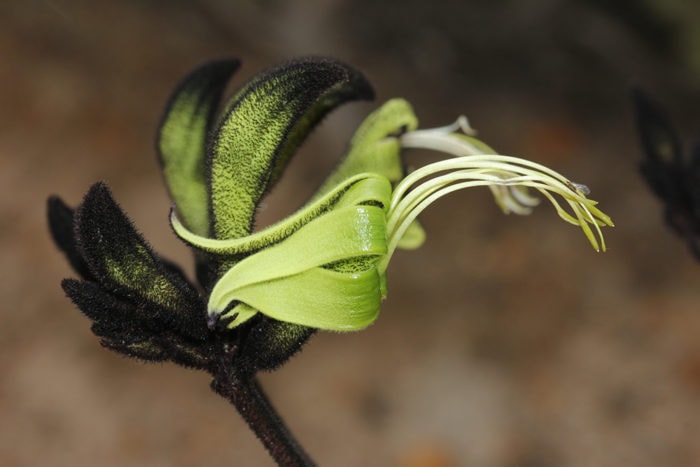‘They’re very unusual, even for a WA plant’: our glorious kangaroo paws

IF YOU’RE EVER at San Diego Airport, and you happen to be in the carpark, you’ll spot an array of kangaroo paw, far away from their home in the south-west of Western Australia.
“That they’re so enamoured worldwide now is such a great story given they’ve come from such an isolated part of the world,” says Digby Growns, the senior plant breeder at Kings Park and Botanic Garden in WA.
Digby has worked with kangaroo paw almost his whole life, firstly as young man on his newly bought property and now in his job at the botanic garden.
There are exactly 11 species of kangaroo paw in Western Australia, the red-and-green variety being the most revered. It was officially made the state floral emblem in 1960.
But the other 10 species are no less beautiful. Yellow kangaroo paw (Anigozanthos pulcherrimus), for example, is a striking, golden-yellow colour and Anigozanthos rufus is a deep crimson all over.
The black kangaroo paw (Macropidia fuliginosa) is the “twelfth” species of kangaroo paw, as Digby calls it, sitting in its very own genus. “The black-and-lime green colour is my favourite, it’s just so unique.”

(Image credit: Tali Moyle)
While coming in an array of colours, what all kangaroo paws have in common is their shape. Each has a long stem, with tubular flowers at the end, which are shaped a lot like the paw of a kangaroo – also an Australian emblem – as their name suggests.
“They’re very unusual among any flower, even Western Australian flora, which has a lot of unusual members,” Digby says, which is why the Northern Hemisphere is infatuated with them. The fact that most species also look good fresh and after they lose that inital freshness as well also adds to the attraction.
The kangaroo paw is much-loved by West Australians, however, it’s notoriously difficult to cultivate, meaning that few people grow the red-and-green variety in their gardens.
Instead, most grow kangaroo paw hybrids, which are easier to cultivate and come in hundreds of different colours. As the head plant breeder, Digby specialises in creating new hybrids. His collection at the botanic garden is a sight to behold.
“We basically have every colour of the rainbow represented in kangaroo paw here at the garden,” Digby says. “People are just gobsmacked at how amazing it looks. It’s a bit of a wonderland. No one expects such a range of beautiful colours.”

(Image credit: Kings Park and Botanic Garden)
Digby’s grand plan, along with other breeders, is to make the kangaroo paw as ubiquitous as the grevillea, which was made easy to cultivate thanks to hybridisation. It’s now one of the most common garden plants in Australia.
“One of the issues is that Western Australian flora come from these micro environments where they have evolved for hundreds of thousands of years. When you try to bring them into cultivation and change the water regime and the soil type, they’re quite difficult.
“Breeding programs are trying to create varieties and hybrids that are easily grown in people’s gardens. I think that step from the wild, to being able to be cultivated, is really where it’s going to make its mark.
“If you look at grevillea, there are hundreds of species and varieties, and most are hybrids that are easy to cultivate, and that’s what has made people more aware of them.
“I think the same thing will happen with kangaroo paw once we crack the cultivation in more humid environments like Sydney and Melbourne, varieties that are a reminder of the bush but won’t die so easily. That’s how they’ll become more popular.”




